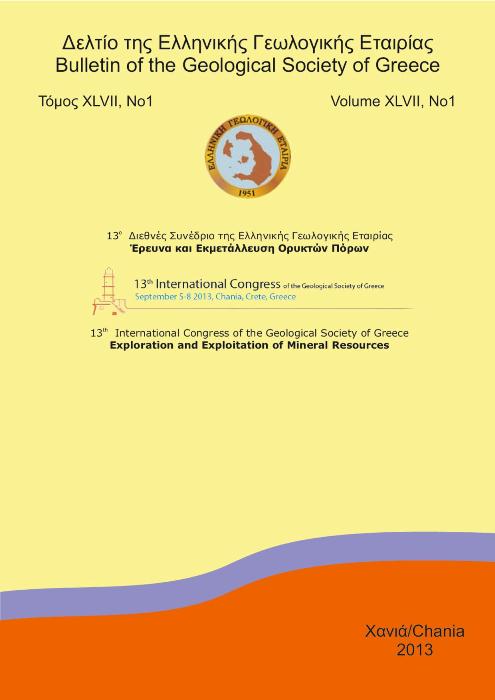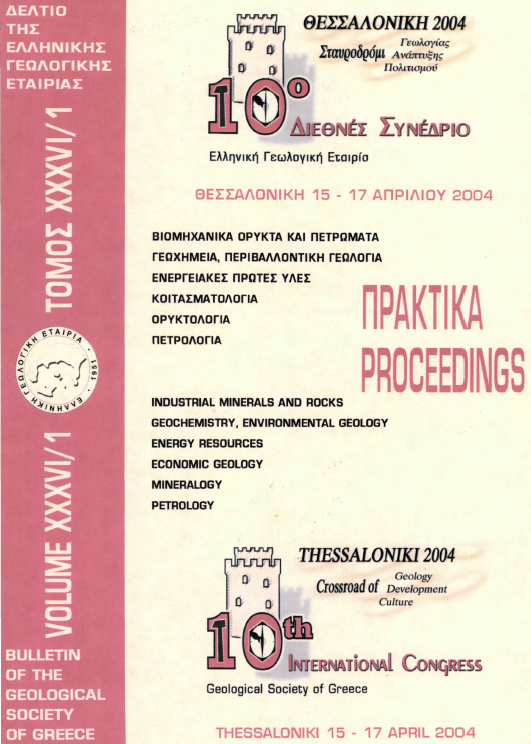REPLACEMENT OF Ti02 PIGMENT BY CaC03 FROM CEFALONIA IN EMULSION PAINTS

Περίληψη
Στόχος της εργασίας είναι να δείξει ότι το ανθρακικό ασβέστιο από τα κοιτάσματα κρητίδας της περιοχής Μηνιές της Κεφαλονιάς, που υφίστανται εκμετάλευση από την εταιρεία IONIAN KALK Α.Ε. είναι κατάλληλη πρώτη ύλη για τη βιομηχανία χρωμάτων, ιδίως για υδατοδιαλυτά χρώματα. Το κοίτασμα χαρακτηρίζεται από υψηλή περιεκτικότητα σε ανθρακικό ασβέστιο (>99 %), υψηλή λευκότητα και χαμηλό δείκτη κιτρινισμού, από πολύ χαμηλή περιεκτικότητα σε βαρέα ορυκτά και χαμηλό περιεχόμενο σε MgO (<0.15 %), Si02 (<0.05 %) και Fe203 (<0.01 %). Προσδιορίστηκαν οπτικές και μηχανικές ιδιότητες λευκών υδατοδιαλυτών χρωμάτων που περιείχαν ανθρακικό ασβέστιο από τους ασβεστόλιθους της Κεφαλονιάς. Το ανθρακικό ασβέστιο αντικατέστησε σε διάφορες αναλογίες το Ti02 που χρησιμοποιείται ως χρωστική ουσία (πιγμέντο). Τα πειραματικά αποτελέσματα καταδεικνύουν σαφώς ότι το συγκεκριμένο ανθρακικό ασβέστιο μπορεί να χρησιμοποιηθεί όχι μόνο ως αδρανές πληρωτικό ή/και διασταλτικό υλικό (extender), αλλά ταυτόχρονα μπορεί να έχει πιο ^τουργικές εφαρμογές ως χρωστική ουσία (πιγμέντο). Η αντικατάσταση του Ti02 από ανθρακικό ασβέστιο μπορεί να φθάσει έως 50%, χωρίς να επηρεαστούν ουσιαστικά οι οπτικές και μηχανικές ιδιότητες. Συμπεραίνεται ότι το ανθρακικό ασβέστιο από το συγκεκριμένο κοίτασμα προσφέρει εξαιρετικές ιδιότητες στα χρώματα, ελαττώνει σημαντικά το κόστος παραγωγής και αντικαθιστά ένα μεγάλο μέρος του Ti02 που χρησιμοποιείται σήμερα ως λευκό πιγμέντο.
Λεπτομέρειες άρθρου
- Πώς να δημιουργήσετε Αναφορές
-
Kalafati, K., & Christidis, G. E. (2007). REPLACEMENT OF Ti02 PIGMENT BY CaC03 FROM CEFALONIA IN EMULSION PAINTS. Δελτίο της Ελληνικής Γεωλογικής Εταιρείας, 40(2), 759–768. https://doi.org/10.12681/bgsg.16716
- Ενότητα
- Ορυκτολογία-Πετρολογία-Γεωχημεία-Οικονομική Γεωλογία

Αυτή η εργασία είναι αδειοδοτημένη υπό το CC Αναφορά Δημιουργού – Μη Εμπορική Χρήση 4.0.
Οι συγγραφείς θα πρέπει να είναι σύμφωνοι με τα παρακάτω: Οι συγγραφείς των άρθρων που δημοσιεύονται στο περιοδικό διατηρούν τα δικαιώματα πνευματικής ιδιοκτησίας επί των άρθρων τους, δίνοντας στο περιοδικό το δικαίωμα της πρώτης δημοσίευσης. Άρθρα που δημοσιεύονται στο περιοδικό διατίθενται με άδεια Creative Commons 4.0 Non Commercial και σύμφωνα με την οποία μπορούν να χρησιμοποιούνται ελεύθερα, με αναφορά στο/στη συγγραφέα και στην πρώτη δημοσίευση για μη κερδοσκοπικούς σκοπούς. Οι συγγραφείς μπορούν να: Μοιραστούν — αντιγράψουν και αναδιανέμουν το υλικό με κάθε μέσο και τρόπο, Προσαρμόσουν — αναμείξουν, τροποποιήσουν και δημιουργήσουν πάνω στο υλικό.




